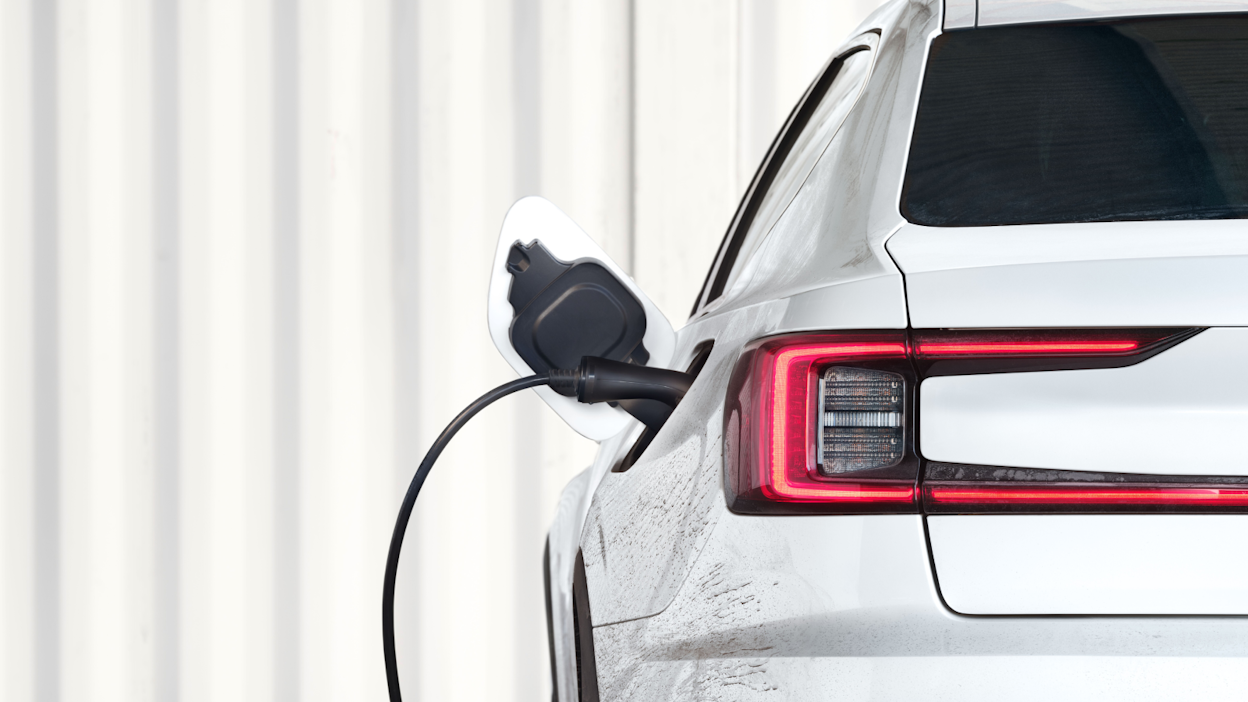Myth-busting: Are EVs really better for the environment?
There’s no denying the scientific fact that electric vehicles emit nothing from their collective tailpipes, helping to reduce CO₂ emissions. But does the argument that they have a bigger carbon footprint than their internal combustion engine counterparts really hold up? We don't think so — but what do the facts say?

Stand behind a Polestar 2, 3 or 4 on a cold morning and you cannot argue the fact that it doesn’t emit anything noxious from its tailpipes. It doesn’t have tailpipes, for a start, but an EV simply won’t release CO2 into the atmosphere because it isn’t burning fossil fuels as a source of power.
However, claiming that an electric vehicle doesn’t contribute any carbon dioxide to the planet’s atmosphere is misleading, as the energy intensity required to make batteries, steel, aluminium and electrical components necessitates electricity and, if this isn’t produced purely from renewable sources, the final product will almost certainly come with what you can call a “carbon debt.”
This is the final, baked-in CO2 emissions figure when all production processes are taken into account. So, an electric vehicle has a carbon debt, the same way that the smartphone in your pocket, the laptop in your bag or the swanky pair of wireless headphones around your neck also have a tab to settle with the planet.
That’s why Polestar is being completely transparent about the carbon footprint of its products, by publishing the results of its Life Cycle Assessment reports for all of its models and variants. And by doing so, we can also highlight how we have successfully reduced this figure on a near-annual basis.

Life cycle assessments allows us to gain knowledge on what we need to do to reduce the overall carbon footprint
“With our first battery electric vehicle — the Polestar 2 — we were able to calculate and compare the carbon footprint to the Volvo XC40, a full internal combustion engine, back when our life cycle analysis began in 2020,” explains Emil Inberg, Environmental Sustainability Specialist at Polestar.
Compared with the XC40 internal combustion engine car, all the Polestar 2 variants were found to have a lower cradle-to-grave carbon footprint, spanning from a 14% reduction for Long range Dual motor models charged with global electricity mix to 57% reduction for Standard range Single motor charged solely with wind power.
“These life cycle assessments allow us to gain knowledge on what we need to do to reduce the overall carbon footprint,” he adds.
To get an idea on how busy the team has been we can rewind to 2021, where the Polestar 2 Long range Dual motor, for example, came with 26.1 tonnes of CO2e carbon debt, but that has since been reduced to 23.1 tonnes in the most recent models — a reduction of 10%.
But where an electric vehicle really starts to counter the argument that an internal combustion engine rival is cleaner, is on the road. Because the more miles you rack up in an EV, the quicker that carbon debt is paid off and the more you start to accelerate past a petrol powered car when it comes to the overall CO2 emissions emitted over a vehicle’s lifetime.
Drive said electric vehicle in a region where much of the electricity is produced by renewables, such as Sweden, and the grams of CO2 equivalent per kilometre figures plummet dramatically.


We have worked to source aluminium from regions that use predominantly hydropower
The bigger picture
Taking a look at the bigger picture, it’s much simpler to make an argument for electric propulsion being a very powerful tool in the drive towards carbon neutrality, the reduction of greenhouse gases throughout the supply chain, and an attempt to slow down the effects of climate change.
“We have seen at Polestar that the largest CO2 emissions are from battery production in EVs, the aluminium and steel used in the vehicles, as well as polymers and electronics,” explains Emil Inberg.
“So we have worked to source aluminium from regions that use predominantly hydropower, which helps lower the carbon footprint per kilogram of material, while requiring that battery suppliersincorporate renewable electricity in their own production and further upstream in the supply chain. We will continue to do this with every element of our vehicles,” he adds.
Perhaps more importantly, Emil says that Polestar is offering customers the tools to drive with as little climate impact as possible. Polestar drivers in the UK, for example, can use Octopus Energy's Intelligent Octopus Go tariff, which automatically schedules charging for when energy is cheapest (which most often correlates to a higher level of renewables in the electricity grid).
Of course, the cleanest form of transport is still your legs: nothing is going to beat walking (there, we said it). But if you need to use a car, an EV is still the best option for the environment and it’s only going to get better.







